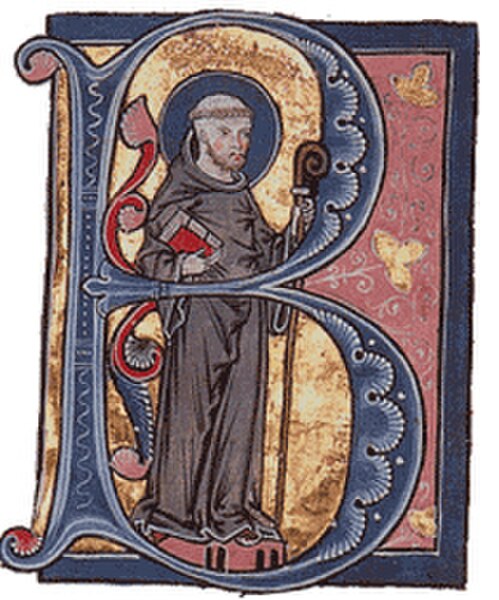Neath Abbey was a Cistercian monastery, located near the present-day town of Neath in South Wales, UK. It was once the largest abbey in Wales. Substantial ruins can still be seen, and are in the care of Cadw. Tudor historian John Leland called Neath Abbey "the fairest abbey of all Wales."
Neath abbey, 1849
Ruins of Neath Abbey
Ruins of Neath Abbey
A view of Neath Abbey (c. 1800) by Hendrik Frans de Cort
The Cistercians, officially the Order of Cistercians, are a Catholic religious order of monks and nuns that branched off from the Benedictines and follow the Rule of Saint Benedict, as well as the contributions of the highly-influential Bernard of Clairvaux, known as the Latin Rule. They are also known as Bernardines, after Saint Bernard himself, or as White Monks, in reference to the colour of the "cuculla" or cowl worn by the Cistercians over their habits, as opposed to the black cowl worn by Benedictines.
St. Bernard of Clairvaux, one of the most influential early Cistercians, seen here depicted in a historiated initial
An illumination of Stephen Harding (right) presenting a model of his church to the Blessed Virgin Mary (Municipal Library, Dijon). Cîteaux, c. 1125. At this period Cistercian illumination was the most advanced in France, but within 25 years it was abandoned altogether under the influence of Bernard of Clairvaux.
Tintern Abbey, founded in 1131
The ruins of Melrose Abbey, mother house of the Cistercians in Scotland








